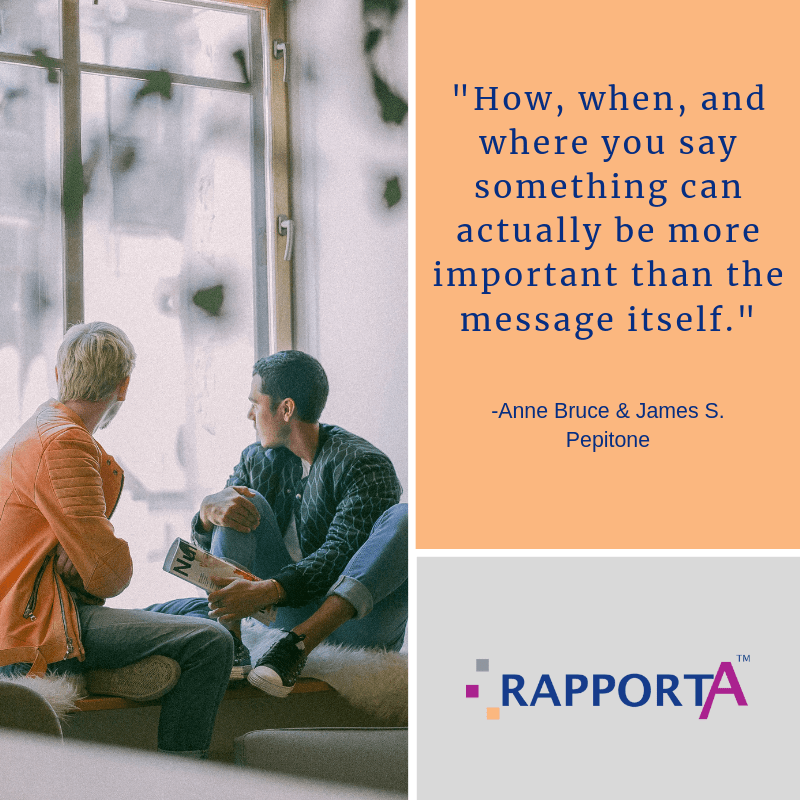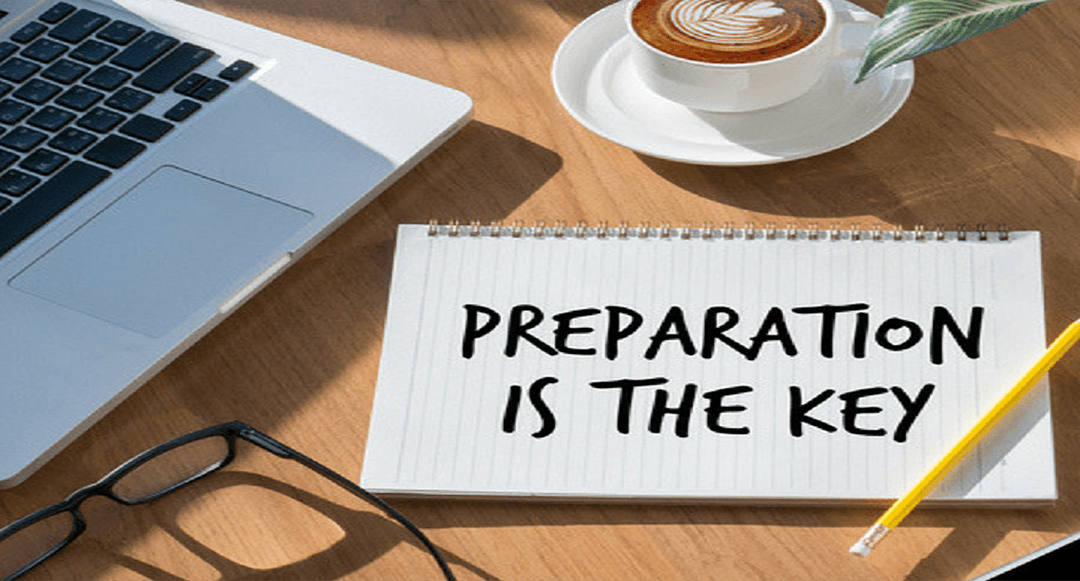How to avoid the Waffle Trap
December 5, 2020
If you have ever found yourself rattling on in a presentation or meeting, you may just have succumbed to the “Waffle Trap”.

The Waffle Trap has ruined, or at the very least, weakened many a presentation, and I’m not just talking about formal presentations – in fact, it is a common occurrence in meetings with customers, internal meetings and presentations. AVOID WAFFLE AT ALL COSTS if you want to come across with presence, gravitas and authority.
If you want people to see you as uncertain, unfocused or apologetic, then by all means go ahead and waffle to your heart’s content. But I hope not.
If you’ve done your homework and are convinced your messages and points are worth hearing and considering, then it’s worth you making the effort to ensure they make the best impact, which definitely means. . . no waffle.
The Waffle Trap can be described as:
- talking, apparently aimlessly, without making a clear point
- continuing to speak when you have already made your point clearly
- including far too much detail – more than is needed to strengthen your position (this ends up weakening it because people lose interest and forget the main bits!)
- Veering off into territory that shares only a tenuous link with your main message or messages
If you tell me that this has never happened to you, I’ll believe you – although millions wouldn’t!
The Waffle Trap can be unintentionally activated when:
- You haven’t prepared your main messages and supporting points in clear, well structured phrases
- You put them out there because you are not sure your point was clear
- You then fear that the listeners (one, some or all) may be in disagreement, so you feel the need to add “supporting” information on the spot, which may not be well thought out or presented – especially if you feel nervous
- You are feeling apologetic about the information you are providing.
- You are suffering from “imposter syndrome” or some other modern work-related psychological confidence-suck, like thinking that everyone in the room is more capable / experienced/ somehow better than you and that they are doubting your competence and capability.
The problem is, it seems like a good idea at the time. You’re standing or sitting there looking at faces that don’t seem to be registering the importance of what you’ve just said, and you think “clearly they don’t get it”. Unconsciously you are also wondering whether you’ve just not done a good enough job in presenting the information. So you try to make up for it only to realise 5 minutes later that you have lost the plot, and along with it, your authority — and you may then begin to trail off, mumbling something like “Well, that’s the proposal. . . .do you have any questions?”
If this sounds like a familiar scenario (or one you’d like to take preemptive action to avoid) here are 7 ways to completely circumvent the Waffle Trap and ensure you don’t succumb to its easy allure:
- Don’t start with preparing your slides. Start with preparing your messages.
- Formulate your messages or points clearly in the first place, and have a structure for them.
A way to test yourself on this is to try to deliver the key points in 2-3 minutes. Okay, you won’t be including much supporting evidence or bringing it to life with examples in 2-3 minutes, but you will see whether you yourself understand the points you need to make.
- Decide on an impactful opener
and build your supporting evidence, slides, examples and images into what is now a clear presentation of well-articulated points, ideas or options for others to consider or act upon.
- For particularly important occasions (a pitch, an internal steering group meeting with several senior leaders, a big team meeting or an update on a major project for example) practice delivering the presentation out loud, and film or record yourself. When you listen to it, try to detach yourself enough to imagine that you are the audience and listen/watch for impact; if you imagine you are one of the other attendees, what considerations, priorities and concerns are raised? Where is more clarity, interest, passion or engagement needed? The added benefit to recording yourself is that it allows you to see whether your body language (posture, gestures, facial expressions, eye contact etc) and your voice are all congruent with your words. Are you coming across as authentic and connected? if not, make adjustments accordingly.
- Get used to the idea that Pausing can be Powerful!
A silent pause is so much more impactful than an “um”, “em”, or repeated “filler word” – or phrase such as basically, obviously, to be honest, etc.
- If you really think your audience is not engaged or “getting” what you are saying, ask an open question or give them something to do.
For example, “What are your thoughts so far?” or “What would we do if this happened? Let’s take a few minutes and discuss this in pairs, then I’ll ask for your feedback.” It can be anything that you can then link to your next point. Just be prepared to deal appropriately with the responses you get! (If you need some help with that, let me know.)
- End on a decisive note. Some people like to summarise the main points, some like to end with an illustrative story and others prefer to simply thank the audience for their attention. It’s your choice. Thinking about it beforehand will help ensure that how you conclude helps you maintain impact, engagement and authority.
If you take these 7 steps before meetings or presentations you can definitely help yourself avoid the Waffle Trap and enhance your positive impact, presence and authority as well.
P.S. This article from Forbes is not about avoiding the Waffle Trap per se, but there are some great ideas here that you might also like: https://www.forbes.com/sites/kathryndill/2014/05/01/never-give-a-boring-presentation-again/#3a1b036657e2

A WholeBeing approach is proven to help; in my experience, anyone with the right purpose and mindset – who also applies the right communication tools and techniques consistently – can enhance their brand and impact and increase their influence significantly. And start to see the benefits almost immediately. If you feel you don’t yet have the personal brand and impact you would like to have, and are not sure what’s missing, something (or several things) on this list is likely to help. One of my recent clients turned her own brand and impact around to fantastic feedback and outcomes – improving her relationships, increasing her credibility and influence and becoming happier in the process. (You are welcome to read the feedback HERE for inspiration and encouragement.) Read on for 8 of the ways this already highly effective female leader has begun to apply the principles of WholeBeing Communication, in a totally authentic-to-her way, to excellent effect and benefit to her own brand and impact (not to mention career prospects), her team and her organisation: Choose your thoughts and attitude. Don’t let other people or negative experiences in the past “run” your emotions. Instead, consciously decide on the best mindset when approaching each situation and individual and choose that. Then focus on it whilst preparing and engaging on the topic at hand Preparation for meetings. Ask yourself the right kinds of open, leading and closed questions to help your brain tap into new ideas and insights about your objectives, the context and other people. Practice the principle of curiosity rather than defensiveness. From a communication perspective, curiosity is powerful and yet neutral, whereas defensiveness is weak. Having a curious mindset keeps insecurities at bay. And you can’t be curious and defensive at the same time. 😊 In fact, ask open questions 80% more often than you ask closed questions! This way you find out much more about the situation AND others’ perspectives – and are more likely to discover the best ways to address them. This is especially true when facing resistance or challenging behaviours (see tip #3 above). Deliver ideas in a structured, purposeful, positive way. This requires more than just thinking about the content! Choose a mindset that empowers you rather than weakens you (see tip #1). Identify your purpose. Notice the context and take it into consideration. Structure your messages and go for conciseness and clarity. Consider your audience (or other meeting participants) and tailor your messages to them. Then deliver them with confident, positive physical presence (body language) and vocal impact. Increase connection and improve rapport with each of your main stakeholders – that way, when something challenging happens, you are already well-positioned for good collaboration on the solution. Empower your team. It’s NOT faster to do it all yourself! If you do, you run yourself ragged and keep your high-potential team members from developing . . . which can also prevent your own progression. Great leaders develop and coach their teams to address problems and achieve the team objectives; they are clear on expectations, challenging, supportive and empowering. Good managers don’t mico-manage or coddle their teams too much but neither do they abdicate and take “letting the team get on with it” too far. If you aren’t getting the results you expect when you delegate, look into best-practice delegation – and start practicing it. Commit to consistency in your mindset, communication style and behaviours. When people are consistent this increases trust, engagement, credibility and impact – both individually and especially combined these qualities enhance influence. Whether you are re-building your brand or building your brand from scratch, consistency is essential. My client started to experience the benefits of applying these thinking, planning and communication techniques immediately after the first session – I wish you similar great outcomes!

The other day one of my coaching clients asked me, with a mixture of exhaustion in his posture, resignation in his voice and a small glimmer of hope in his eyes “How can I stop having to attend so many meetings?!” I felt for him. He has recently been promoted to a Board position and as per the usual he is struggling to back-fill his previous role, as well as get his current team onside, make the right impact with the other Board members – his new Peers – and handle some immediate and pressing challenges. It seemed he didn’t have enough time in any given day. So we worked out a plan and by the end of the meeting he felt somewhat relieved that at least now he HAS a plan for how meeting invitations will be reviewed, assessed and deal with. He will still have to attend lots of meetings – that’s simply a part of his senior role – but he will no longer feel as if he is held bound and captive to a schedule outside his control. Something else we have talked about many times in the past is how to prepare for meetings. Some would say you can never be too prepared going into a meeting – and perhaps this is a good starting point, but being WELL prepared will give anyone a more calm and purposeful feeling and it increases your chances of getting a good outcome (or at least avoiding a bad one) by about 70%. Meetings attended + good preparation = better outcomes x less stress & more success = A Happier Meeting-Going Bunny (Exec, Manager, worker) Here are five ways to be better prepared and make better use of the time you spend in meetings – my client applies this thinking and reports excellent results from doing so: Lock in on Logistics Confirm the date, time, location and who will be in the meeting as soon as possible. It looks disorganized and unprofessional if you wait until the day of the meeting. If your meeting is in a location you have never been to, Google the map and/or tube journey at least a day prior. Be sure you know what time you need to leave and get to the meeting a few minutes early. Get online and look up traffic problems and construction prior to leaving. Pack everything you need to take with you or at least have a list to use before you leave to make sure you have all you need. Again, don’t wait until the last minute. Do it the night before if it is a morning meeting or first thing in the morning if it is an afternoon meeting. Research and Plan Review the company and everyone who will be there – on Google, Twitter, Facebook and LinkedIn. Give yourself a good hour or more to do this and do it a few days in advance if you can. This will give you time to think about what you need to do and say – and help you know whether you need to contact someone else for more information. Watch the news or scan the headlines online before you leave for the meeting to see if there is anything happening in the world that relates to you, your meeting, their company or the people you are meeting with. If there is, you will show that you are sharp and on top of things in the meeting. Most importantly, ask yourself these three questions: What is your purpose for attending this meeting? Be clear in your own mind why you are going into this meeting: what your ideal outcomes are. This will help you prepare to achieve those outcomes, or something as near them as possible. Speaking of which, also have a back-up plan in mind. Who can give you what you want or need to achieve your meeting goal? Perhaps there is someone you can contact beforehand to understand the other party’s position and interests, so that you can prepare accordingly. What’s in it for them? If it’s a presentation or sales pitch, ask yourself these questions: “What’s in it for them? What challenges does the other party need to address, and how can you help them? What is the decision-maker’s goal?” If you don’t know, don’t hesitate to ask open questions about their motivations and objectives, and be prepared to provide examples and evidence of how you can help them achieve it. Attitude is Everything Ensure your mental attitude is positive and open. If you go into any conversation with limiting or negative beliefs – about yourself, the situation or the other party(ies), the chances of positive outcomes are drastically reduced. Instead, ask yourself positive, productive questions such as “What more do I need to understand to provide the best solutions?” “How can I demonstrate my experience and expertise?” Employ the power of Body Language and Vocal Impact. No matter how great you are, how relevant or impressive your content or how articulate your speech, both body language and vocal impact will make a huge difference as to how much presence and credibility you have in any meeting or presentation. Presenting yourself Decide how you want to present yourself in the context of this meeting, and make sure everything is clean, groomed and organised the night before: clothes, shoes, accessories. This will save you time and stress on the day – so that in as little time as possible you can get ready to present yourself in an appropriate manner. Identify the kind of organisation you are visiting as to style; the best practice is to match or dress slightly more smartly. This is a straightforward process you can follow for any meeting and if you prepare this way you will be calmer, more confident, more purposeful and more resourceful – and your chances of positive outcomes will be improved significantly.

In my experience of coaching so many people over the years, it helps to take the same kind of approach to a performance review as when preparing for an interview. A performance review is about your line manager being able to see how you have contributed to your organisation, understand how you lead and manage the performance of others, and believe in your potential for continued progression. It positions you in the right way to be considered for the kinds of opportunities you want, because you help identify, create and define them. If you apply these tips you will not only be well-prepared for your next appraisal, but you will go into it with greater clarity, confidence and purpose. Take ownership – itʼs your performance appraisal. Itʼs an opportunity for 1 to 1 time with your manager that is focused only on you, so plan to make the most of it. Donʼt wait until the week before to prepare! A few weeks before it may all look pretty clear but we all know the likelihood of that remaining the case. I recommend starting to review and prepare at least 6 weeks in advance. If you (like most of my coaching clients) struggle to remember all of your wins and achievements when itʼs time for an annual review, it will help to keep a record of your successes throughout the year, noting what you did well, the challenges you faced and how you addressed them. This gives you confidence anytime, and is also evidence that you can easily present when you are asked to describe your own performance in a review. Also acknowledge any failures, or times where you simply did not perform as well as expected. Be neutral about what happened; consider the facts and what you have learnt from the experience. Be matter of fact and purposeful about taking your learning forward, rather than defensive. Get comfortable describing your capabilities and strengths and how they support the strategic objectives of the organisation. This is not the time for modesty, false or otherwise. Neither is it the time for over-stating the case. Your appraisal is the right place to say “I was able to achieve this outcome because . . .” “It was great to be able to save the company so much money” or “my team were behind me and performed well because I was clear about our objectives from the start, coached them in regular 1 to 1ʼs, and used a challenging yet supportive style of leadership.” Be aware of how you have grown your network, and how this is adding value to your know-how, resources and capabilities. Donʼt hesitate to communicate this as part of the performance conversation. Be open about how you have developed yourself – what have you done outside any corporate development you may have had? What books have you read, what talks did you attend, what research have you carried out and what were the benefits? Be prepared to articulate how you lead and manage othersʼ performance. It doesnʼt happen by accident and you must have reasons for why you do what you do – and if it’s working well, your leadership team needs to know. Be ready to ask good quality (usually open-ended) questions about your visibility and brand in the organisation – how do others, including your line manager and other senior leaders, see you and your performance? How can you make a bigger impact, a greater contribution, or develop your potential in their eyes? Know exactly what you want – and donʼt be afraid to ask for it. Have a clear proposition and rationale for your continued progression, including the support you may need: for example, introductions, financial contributions for additional training or qualifications, sponsorship for special projects. Be ready to present this confidently, also highlighting the benefits to your organisation. If you want your manager to be in the best position to sponsor you for great opportunities when they arise, this approach will give them the confidence they need to do that. I hope you like these tips – if you apply them, you will have one of your best performance reviews ever.

We’ve all been there – that moment when we are asked to introduce ourselves in a meeting. We know it’s coming (or should know) so why are we ever caught off guard? It helps to have given some thought to how we can best introduce ourselves, both generally and to each particular audience. While I would never suggest delivering a memorised personal introduction, it helps to ask yourself a few questions, and then come up with some phrases that can be called on as appropriate to help you make a positive, powerful impact. Here are 3 tips to help: Tip #1. Communicate what you have to offer. Tip #2 Provide some context that’s relevant and of interest to the audience. Tip #3 Do this in a memorable, positive and impactful way. Why are you there, and why have you been invited? Your motivation and purpose for being there may or may not be closely related to why the other party invited you – or agreed to the meeting. Understanding the difference here is really important. No salesperson would say “I’m Jennifer Green from Acme Information and I’m here to promote our information services” – at least I hope not! (Although, truth be told, I have heard introductions along similar lines; I would just like to forget about them.) Whilst that may be true, it will inspire zero engagement or real interest from the other people who are present. Situations and therefore types of introductions are many, however here are a few examples: Let’s say the prospective client has agreed to meet you at your invitation (or perhaps you have been referred by someone they know) -Their reasons in this case may be more along the lines of “I feel we are out of touch with our customers; our sales and market share are not as strong as they were and I’d like to know whether Acme Information could help me find out why, and what we can do to get back on track“ .On this basis, a better introduction for Jennifer could be: “I’m Jennifer Green, a data expert from Acme Information. Thank you for meeting with me. We work with companies in many different industries to help them understand how to capture and use information to help them improve their offering to their customers. My objective today is to gain a greater understanding of your business and how our proven data capture systems could help you connect more effectively and get back on track with your customers.“ In less than 30 seconds, this communicates what you have to offer, the fact that you are interested in their business challenges, and that your focus is on how you can be of service. Never mind that that being of service does generate sales for your company – that’s understood by everyone and completely beside the point for the client, who is only interested in how you can help them. That’s why they accepted the meeting and it’s the only way you will get and keep their interest throughout said meeting. Or, let’s say you are meeting new people internally -It’s super helpful for other people to know related information about you and your experience.For example, “Hi, I’m John Carson, an Internal Architect in International IT. I’ll be leading the development of your software for this project, working closely with you to ensure it does everything it needs to do. I’ve worked on similar projects before such as Customer Criteria and the launch of our new online service last year and I’m good at managing teams to keep things on track. I look forward to working with you all.“ How you come across is as important as what you say; If you look or sound unsure of yourself as you deliver your introduction, it will lack impact. Body language and vocal impact usually go together – like peas and carrots, as Forrest Gump would say. (It’s kind of hard to speak out confidently when your back and shoulders are hunched – I’m just saying.) So here’s some helpful tips about your body language: Always speak with an upright back and shoulder position – I’m not talking at military attention here – and maintain eye contact with the group as you speak. Keep your body language open – this means don’t cross your arms or hands in front of you and keep your hands visible rather than under the table or in your pockets. As you speak, make eye contact with the people you are meeting – otherwise they may think (at best) that you lack confidence about yourself or what you are saying, and (at worst) that you are hiding something, neither of which would inspire confidence and a desire to do business with you. Ensure your voice is loud enough to be heard easily by everyone. They will be more attentive if your voice is calm and measured, so don’t rush. If you have something valid to contribute, they need to know what it is. That last bit – measured – doesn’t mean expressionless! Ensure you communicate some enthusiasm for being there, with them, at that time, for that purpose. Finally, don’t just trail off at the end of your last sentence; finish decisively. If you do these things – communicate what you can contribute in an effective way, provide some context that is of interest to the audience, and make sure that how you do this has impact, you will do yourself and everyone there a service. And that’s a great way to start a meeting.
